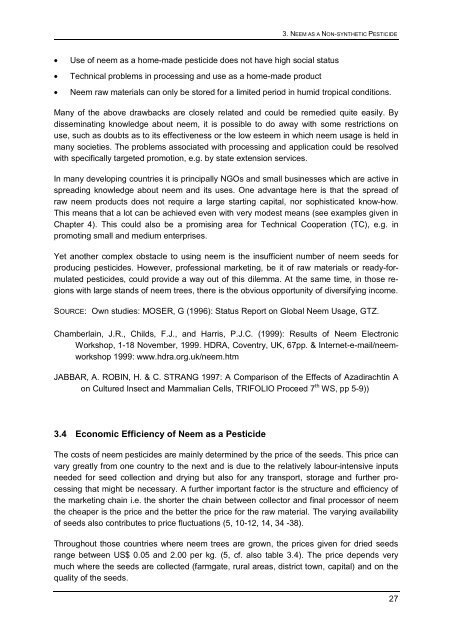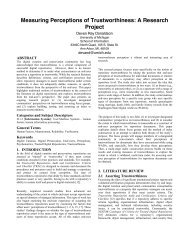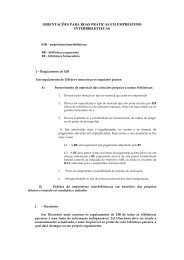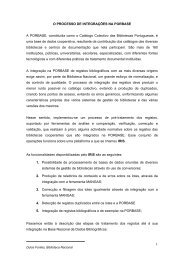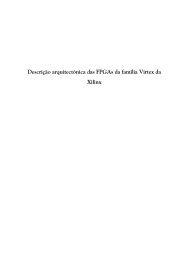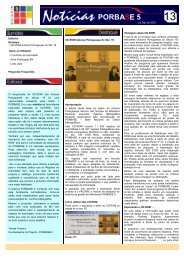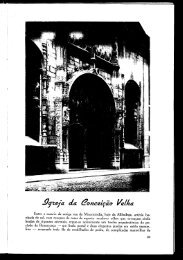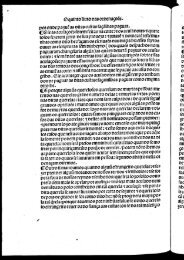Status report on global Neem usage - Biblioteca Nacional de Portugal
Status report on global Neem usage - Biblioteca Nacional de Portugal
Status report on global Neem usage - Biblioteca Nacional de Portugal
You also want an ePaper? Increase the reach of your titles
YUMPU automatically turns print PDFs into web optimized ePapers that Google loves.
• Use of neem as a home-ma<strong>de</strong> pestici<strong>de</strong> does not have high social status<br />
• Technical problems in processing and use as a home-ma<strong>de</strong> product<br />
3. NEEM AS A NON-SYNTHETIC PESTICIDE<br />
• <strong>Neem</strong> raw materials can <strong>on</strong>ly be stored for a limited period in humid tropical c<strong>on</strong>diti<strong>on</strong>s.<br />
Many of the above drawbacks are closely related and could be remedied quite easily. By<br />
disseminating knowledge about neem, it is possible to do away with some restricti<strong>on</strong>s <strong>on</strong><br />
use, such as doubts as to its effectiveness or the low esteem in which neem <strong>usage</strong> is held in<br />
many societies. The problems associated with processing and applicati<strong>on</strong> could be resolved<br />
with specifically targeted promoti<strong>on</strong>, e.g. by state extensi<strong>on</strong> services.<br />
In many <strong>de</strong>veloping countries it is principally NGOs and small businesses which are active in<br />
spreading knowledge about neem and its uses. One advantage here is that the spread of<br />
raw neem products does not require a large starting capital, nor sophisticated know-how.<br />
This means that a lot can be achieved even with very mo<strong>de</strong>st means (see examples given in<br />
Chapter 4). This could also be a promising area for Technical Cooperati<strong>on</strong> (TC), e.g. in<br />
promoting small and medium enterprises.<br />
Yet another complex obstacle to using neem is the insufficient number of neem seeds for<br />
producing pestici<strong>de</strong>s. However, professi<strong>on</strong>al marketing, be it of raw materials or ready-formulated<br />
pestici<strong>de</strong>s, could provi<strong>de</strong> a way out of this dilemma. At the same time, in those regi<strong>on</strong>s<br />
with large stands of neem trees, there is the obvious opportunity of diversifying income.<br />
SOURCE: Own studies: MOSER, G (1996): <str<strong>on</strong>g>Status</str<strong>on</strong>g> Report <strong>on</strong> Global <strong>Neem</strong> Usage, GTZ.<br />
Chamberlain, J.R., Childs, F.J., and Harris, P.J.C. (1999): Results of <strong>Neem</strong> Electr<strong>on</strong>ic<br />
Workshop, 1-18 November, 1999. HDRA, Coventry, UK, 67pp. & Internet-e-mail/neemworkshop<br />
1999: www.hdra.org.uk/neem.htm<br />
JABBAR, A. ROBIN, H. & C. STRANG 1997: A Comparis<strong>on</strong> of the Effects of Azadirachtin A<br />
<strong>on</strong> Cultured Insect and Mammalian Cells, TRIFOLIO Proceed 7 th WS, pp 5-9))<br />
3.4 Ec<strong>on</strong>omic Efficiency of <strong>Neem</strong> as a Pestici<strong>de</strong><br />
The costs of neem pestici<strong>de</strong>s are mainly <strong>de</strong>termined by the price of the seeds. This price can<br />
vary greatly from <strong>on</strong>e country to the next and is due to the relatively labour-intensive inputs<br />
nee<strong>de</strong>d for seed collecti<strong>on</strong> and drying but also for any transport, storage and further processing<br />
that might be necessary. A further important factor is the structure and efficiency of<br />
the marketing chain i.e. the shorter the chain between collector and final processor of neem<br />
the cheaper is the price and the better the price for the raw material. The varying availability<br />
of seeds also c<strong>on</strong>tributes to price fluctuati<strong>on</strong>s (5, 10-12, 14, 34 -38).<br />
Throughout those countries where neem trees are grown, the prices given for dried seeds<br />
range between US$ 0.05 and 2.00 per kg. (5, cf. also table 3.4). The price <strong>de</strong>pends very<br />
much where the seeds are collected (farmgate, rural areas, district town, capital) and <strong>on</strong> the<br />
quality of the seeds.<br />
27


